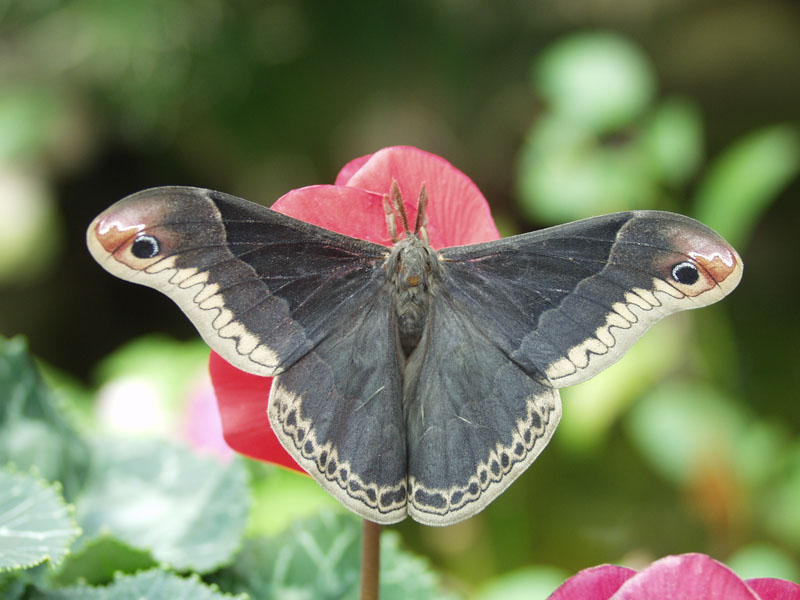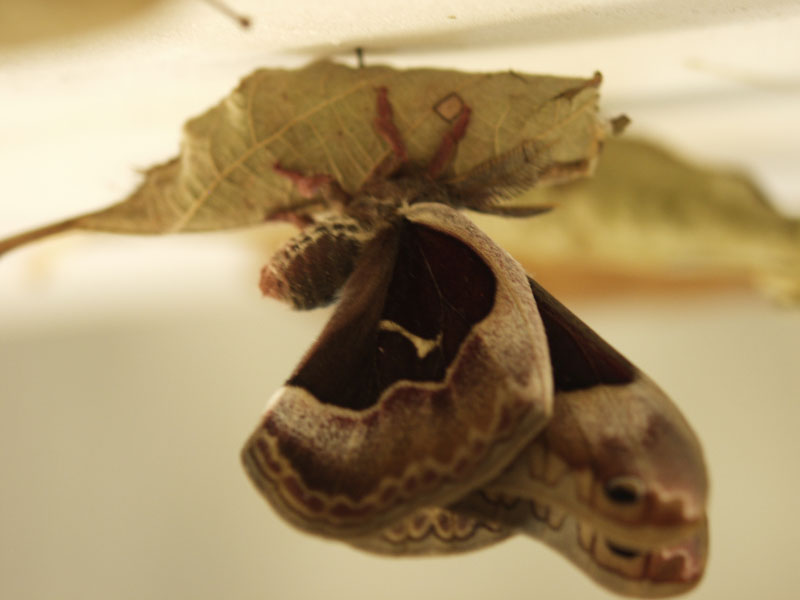



Like many other moths, they do not feed in the adult form.
The origin of Callosamia is currently unknown. The origin of promethea is based on the Titan Prometheus of Greek Mythology. He was a champion of mankind, best known for stealing fire from Zeus and giving it to mortals.
Promethea moths are found in the deciduous woodlands of Canada and the U.S.
Males seek females in the afternoon and early evening. That night, the female will lay rows of 4-10 eggs on the upperside of host plant leaves. A caterpillar ready to pupate will strengthen a leaf with silk and spin its cocoon inside the curled leaf. The cocoon hangs from the host plant, and the caterpillar will remain inside for the winter.
One generation from May-July in the northern range. Two generations, one from March-May and one in August, in the southern range.
The caterpillars of the Promethea moth have been known to “prune” their host plants of heavily eaten leaves in order to hide the evidence of caterpillar feeding that many predators will look for in order to find and eat the caterpillars. They do this by chewing through the petiole of the leaf where it meets the rest of the plant.